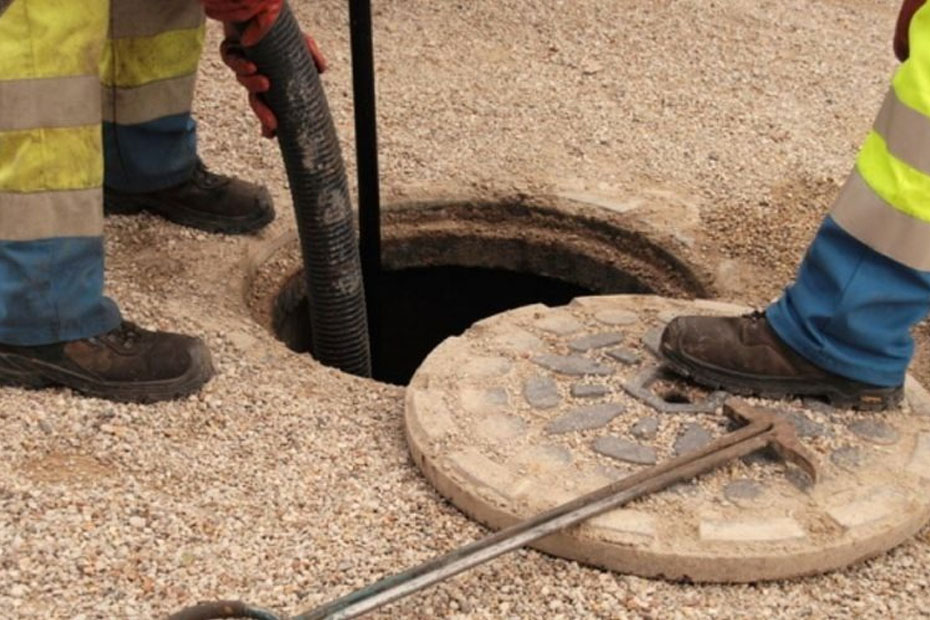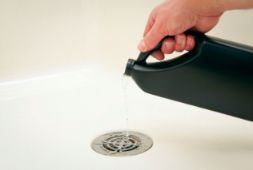Every time you flush a toilet, take a shower, wash clothes or use the garbage disposal, wastewater flows into your septic tank. This wastewater separates into three layers: sludge, effluent and scum.
Avoid flushing non-biodegradable materials like cigarette butts, cotton swabs and menstrual hygiene products. These items can cause a septic system to fail prematurely. For more information, click the link https://www.septictankarmadale.com.au/ provided to proceed.

Wastewater from your toilets, sinks, showers and washing machines flows into the septic tank. This is a concrete or fiberglass water tight container that is usually buried underground near your home. It is sized according to the number of people living in your house and the volume of water usage. Inside the tank wastewater separates into three layers. Heavy solids settle in the bottom where microorganisms decompose them to form sludge. Fats and oils float above this layer to form a scum layer. The middle layer is clear liquid wastewater called effluent.
The wastewater exits the septic tank through a perforated pipe into a soil dispersal field or drain field. This system of pipes moves out the pre-treated wastewater to the soil where it is absorbed and purified by bacteria. The septic tank is a vital part of this pre-treatment process that prevents foul odors and health problems.
It is important to avoid flushing items that can’t break down or dissolve like diapers, coffee grounds and lint from synthetic fibers. Flushing these items can cause your septic system to back up and require costly repairs. It is also important to have your septic tank pumped out periodically to avoid the buildup of sludge.
A professional can tell you how often you should have your septic tank pumped. Your septic technician may recommend other maintenance to ensure your system is working properly. These include periodic inspection of the absorption field and ensuring that all components of the system are accessible for maintenance. This can include avoiding building structures over or around your tank and the distribution box.
Keeping grass mowed and not planting any trees or shrubs close to the drain field can also help keep septic system components healthy. During an inspection your septic technician will also give you insights into whether or not you need any biological additives for your septic system to work efficiently.
It’s also a good idea to have a riser added to your septic tank so it can be accessed from the ground surface instead of digging into the ground. This will also make it easier to pump the septic tank when necessary.
When solid wastes settle in your septic tank, bacteria break them down into liquid wastewater called effluent. This liquid is pumped out of the tank and flows to your drain field, also known as an absorption field.
In the drain field, a network of pipes perforated with holes extends into the soil. The perforated pipes are surrounded by a layer of gravel. As wastewater trickles through the aggregate, microbes in the soil eat it and return it to groundwater.
The drain field is a large area of uncovered soil close to your home that filters untreated wastewater. The wastewater flows through rocks, dirt, and sand, and it is treated naturally by microbes in the soil. This process is also assisted by the natural gravity that forces wastewater back down into underground aquifers.
During the filtration process, heavy materials, such as toilet paper and feces, sink to the bottom of the septic tank. Lighter materials like soaps, shampoos, and oils float to the top of the liquid. As the wastewater passes through the septic tank, bacteria decompose the heavier solids into sludge and scum. As the bacteria break down the sludge and scum, the resulting liquid (known as effluent) exits the septic tank into the drain field.
The septic system in your home works best when you practice responsible waste disposal, limiting the amount of solids entering it. For example, you should not flush items that can’t be broken down by the bacteria in your septic system such as coffee grounds and diapers. It is also important to avoid using household chemicals that can kill the bacteria in your septic tank or leach field.
If you follow these guidelines, you can expect your septic system to work well for many years. If you notice an odorous wet spot over the drain field or plumbing backups in your home, you may need to install a new drain field. We can help you find the right one for your property. Until then, you can help your septic system last longer by keeping grass and other shallow-rooted plants away from the drain field.
Septic tanks are large, underground storage containers for sewage waste for homes that don’t use municipal sewer systems. They’re constructed of concrete or heavyweight plastic and have two chambers separated by a partial wall. Waste flows into the first chamber, where solids settle to the bottom. The liquids rise over the partially dividing wall into the smaller second chamber, where anaerobic bacteria digest the solids and convert them to carbon dioxide and water.
The liquid waste, called effluent, exits the tank through an outlet pipe. This drains into a drainage field (also known as a leach field) or soil absorption system, where it seeps into the ground through a series of perforated pipes buried in a bed of gravel and other aggregates. The soil naturally absorbs the wastewater, and any pathogens are killed by bacterial action before reaching groundwater supplies.
There are several reasons why it’s important to have your septic tank pumped regularly. First, it’s a good idea to reduce your household water usage. Using high-efficiency toilets and faucets, for example, will greatly decrease the volume of sewage going into your septic tank. You should also repair any leaking or broken plumbing fixtures.
Another reason to have your septic tank pumped is that it helps prevent the buildup of sludge and scum, which can interfere with bacterial digestion of wastewater contaminants. The sludge that builds up can also clog your absorption field and erode the surrounding soil.
Pumping involves a technician locating the lid to your septic tank, then using specialized equipment to open it and insert a vacuum pump inside. This will suck up any liquid, sludge, and solid waste in your tank, and then the technician will clean out your pump and flush all the outlets and filters that connect to the septic tank. They’ll also replace the lid and any access covers before returning to your home.
Generally, it’s best to have your septic tank pumped every three to five years, depending on the size of your household and the volume of sewage your house generates. A septic tank inspector can make a rough estimate of how often your tank should be pumped, but you can also check the sludge level yourself with a special tool called The Sludge Judge.
In a full inspection, InterNACHI inspectors uncover the septic tank, septic distribution box and leach field to check all the components. They look for the date of the last pumping, because septic tanks need to be pumped out once in three or four years (or less often, depending on how many people live in the house). Inspectors will also note whether the tank is leaking and see if the ground around the septic system has risen significantly.
The septic tank is designed to separate solid waste and liquid waste. The first compartment ferments the bulk of the solid waste to create a sludge layer, while the second compartment breaks down smaller waste particles into a clear effluent. A filter and sanitary tees prevent solids from clogging the drain field (earlier tanks did not have these). The drain field disperses the clear effluent into soil layers where bacteria further break down any contaminants.
Covering a septic tank or putting anything over the drain field can seriously affect how well a septic system works. The tank may need to be pumped more frequently, and the drainage field may not absorb water as effectively. The septic tank can become overloaded, and the baffle walls could break down.
A septic system that fails can lead to sewage flowing into areas it should not enter. It can flow into surface waters, contaminating water with pathogens and chemicals that may affect drinking-water wells. It can also flow into the groundwater, contaminating the aquifer with pathogens and nutrients.
Keeping a septic system in good working order increases the value of a home. A failing septic system can cause costly problems such as backed-up toilets and odors that are difficult to flush. Regular septic tank and leach field inspections can detect problems before they get out of hand. If you are thinking of selling your home, septic tank inspections can help speed up the sales process by ensuring that you disclose any septic tank or drainage field issues to buyers. Then you can have the problem fixed before closing, avoiding costly and stressful delays.
